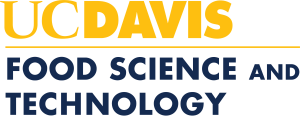A. Specific Learning Outcomes. Students will know how to:
- Design and conduct qualitative and quantitative assays for several enzymes of different classes;
- Prepare standard curves using a spectrophotometer;
- Separate enzymes using chromatographic and electrophoretic methods;
- Calculate relevant parameters of enzymes such as KM, VMax;
- Analyze the mode of reversible inhibition of enzymes;
- Calculate the KI of inhibitors;
- Analyze the kinetics of multisubstrate enzymes;
- Measure, evaluate and interpret the pH dependence of an enzyme-catalyzed reaction;
- Measure, evaluate and interpret the temperature dependence of an enzyme-catalyzed reaction;
- Synthesize, summarize and explain results and conclusions in a scientific document.
- They will also gain practice with basic lab techniques and lab safety.
How this course addresses IFT Core Competencies:
FST123L is a 2 unit course entitled “Enzymology Laboratory”. It is structured to correspond roughly to the lectures in FST 123, but is designed to be a stand-alone course. There is a one-hour lecture each week, followed by three hours of laboratory. The students submit a comprehensive lab report each week, and take a final exam on the theory underlying the experiments as well as calculations. Through the lectures and lab reports, the students acquire skills in experimental design, keeping track of data, calculations, experimental error, interpretation of graphical and numerical data, scientific writing. The class is also taken by incoming graduate students to fulfill the biochemistry lab requirement for our graduate program.
B. Tools used to assess program outcomes.
Bloom’s levels I-III.
This course develops an advanced undergraduate-level understanding of food science concepts. Assessment includes problem sets, two mid-term exams and a cumulative final exam.
C. Brief summary of assessment results to date.
The students do well in the class, indicating that they are mastering the competencies listed in part A. Grading is on a percentage basis, not a curve, and nearly all students receive A’s or B’s. Course evaluations are largely positive. The main suggestion for improvement is to update the lab manual to keep up with evolution of the experiments as more sophisticated methods and equipment become available.
